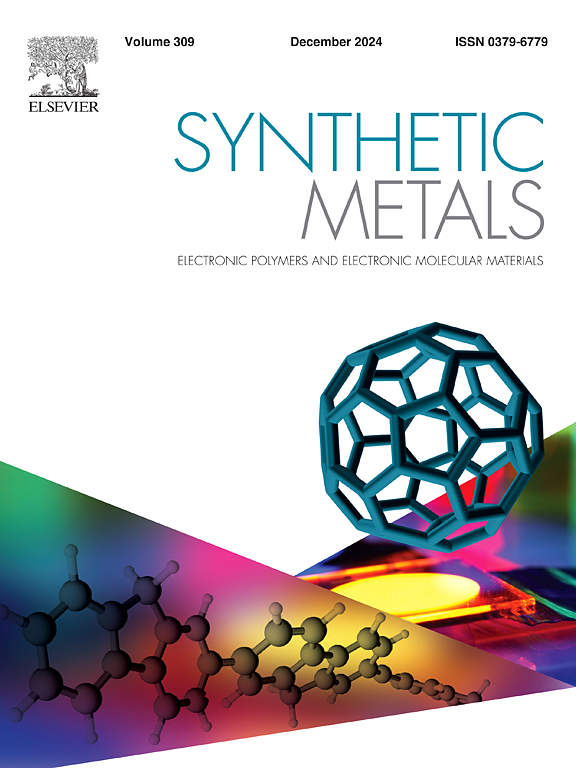含氟电子受体基团的三苯胺基聚合物作为钙钛矿太阳能电池的空穴传输材料
IF 4.6
3区 材料科学
Q2 MATERIALS SCIENCE, MULTIDISCIPLINARY
引用次数: 0
摘要
基于三苯胺的有机半导体聚合物是具有n-i-p结构的钙钛矿太阳能电池(PSCs)中有前途的空穴传输层(HTL)材料。在这项工作中,我们报道了四种新的基于三苯胺的供体-受体结构的均聚物,它们含有不同的氟化电子受体基团。均聚物是用FeCl3作为氧化剂,通过相应单体的氧化聚合制备的。它们结合了孔迁移率、热稳定性和电化学稳定性,并且可以以简单且易于扩展的方式合成。在n-i-p聚酰亚胺聚苯二甲酸(PTA)中掺入新聚合物作为HTL,功率转换效率从18.4 %提高到19.9 %。开路电压和填充因子值的持续增加表明,与单组分聚合物薄膜相比,这些聚合物混合物能够更有效地提取和/或传输载流子。本文章由计算机程序翻译,如有差异,请以英文原文为准。
Triphenylamine-based polymers with fluorinated electron-acceptor groups as hole-transport materials for perovskite solar cells
Organic semiconducting polymers based on triphenylamine of donor-acceptor structure are promising hole-transport layer (HTL) materials in perovskite solar cells (PSCs) with n-i-p configuration. In this work, we report four new triphenylamine-based homopolymers of donor-acceptor structure containing different fluorinated electron acceptor groups. The homopolymers are readily synthesized by oxidative polymerization of the corresponding monomers using of FeCl3 as an oxidant. They combine hole mobility, thermal and electrochemical stability and can be synthesized in a simple and easily scalable manner. By using the new polymers blended with the reference poly(triarylamine) PTA as HTL in n-i-p PSCs, the power conversion efficiency was improved from 18.4 % up to 19.9 %. The consistent increase in the open circuit voltage and fill factor values suggests that these polymer blends enable more efficient extraction and/or transport of charge carriers as compared to the single-component polymer films.
求助全文
通过发布文献求助,成功后即可免费获取论文全文。
去求助
来源期刊

Synthetic Metals
工程技术-材料科学:综合
CiteScore
8.30
自引率
4.50%
发文量
189
审稿时长
33 days
期刊介绍:
This journal is an international medium for the rapid publication of original research papers, short communications and subject reviews dealing with research on and applications of electronic polymers and electronic molecular materials including novel carbon architectures. These functional materials have the properties of metals, semiconductors or magnets and are distinguishable from elemental and alloy/binary metals, semiconductors and magnets.
 求助内容:
求助内容: 应助结果提醒方式:
应助结果提醒方式:


